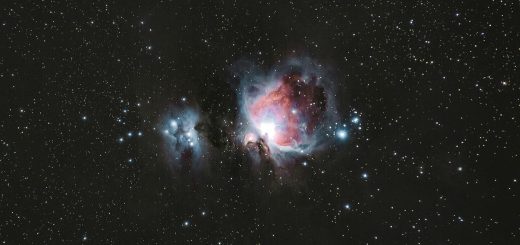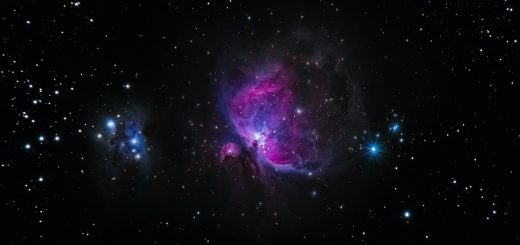The History of Christmas: Interesting Facts for 2024

Before diving in, please note: This post is for informational purposes only. If you’d like to know more about how we approach topics, feel free to check out our friendly Disclaimer Page.
Hey there, amazing readers! 🖐️ Just a quick note: yes, we know there are a lot of ads here. Trust us, we get it—it’s not the prettiest look, but they help us keep this blog alive and kicking. Those pesky little ads cover the costs of all the behind-the-scenes magic, from hosting and tech stuff to creating content we hope you’ll love.
We’re committed to delivering quality posts, and your support (even just sticking around despite the ads) means everything to us. So, bear with us, and thanks for helping us keep the good vibes rolling. Now, on to the fun stuff! 😉
TRANSLATE BUTTON AT THE END OF THE ARTICLE
A Quick Overview
Christmas, a holiday celebrated by billions around the globe, carries with it a rich tapestry of history that intertwines religious traditions, cultural practices, and festive cheer.
As we approach 2024, it’s fascinating to explore how this beloved holiday has evolved over the years.
From its origins to the commercialization we see today, each aspect of Christmas tells a story that bridges the past with the present.
Let’s embark on this festive journey together!
The Origins of Christmas: A Festive Journey Through Time
Christmas traces its roots back to ancient traditions centered around the winter solstice.
The early Christians chose December 25 to celebrate the birth of Jesus Christ, a date that coincided with various pagan festivals.
This timing was strategic, allowing the new religion to assimilate popular customs, making it easier for people to convert.
The earliest recorded celebration of Christmas took place in Rome in 336 AD.
Initially, Christians observed the day with solemnity, focusing on religious practices.
However, over the centuries, this observance transformed into a more joyful celebration.
In medieval Europe, Christmas began to adopt a more festive character.
People found ways to celebrate with feasting, merriment, and communal gatherings.
The holiday became a time when social classes mingled, breaking down barriers for a brief moment.
The Reformation in the 16th century brought about a clash between Catholic and Protestant celebrations.
Some Protestant reformers, like the Puritans, even sought to abolish Christmas, deeming it too extravagant and unbiblical.
This controversy only added to Christmas’s evolving identity.
In the 19th century, Christmas saw a revival thanks to literary works that romanticized the holiday.
Charles Dickens’ "A Christmas Carol" played a significant role in shaping the modern Christmas spirit, emphasizing generosity, compassion, and goodwill.
Fast forward to the 20th century, and Christmas was firmly established as a commercial holiday.
The introduction of more secular traditions, such as Santa Claus and Christmas trees, further blurred the lines between the sacred and the festive.
Today, Christmas is celebrated not only in Christian households.
People from various backgrounds participate in the festivities, making it a truly universal holiday that honors diversity and inclusivity.
How Pagan Traditions Influenced Christmas Celebrations
Pagan practices have significantly impacted how we celebrate Christmas today.
Ancient cultures had their own winter festivals, celebrating the solstice with feasts, fires, and rituals to ward off the darkness.
These customs were absorbed into Christmas traditions, creating a rich tapestry of celebration.
One of the most notable pagan influences is the Yule log.
Originating from Norse traditions, the Yule log was burned to symbolize warmth and light during the darkest days of winter.
Today, its spirit lives on in Christmas logs and festive gatherings around the fireplace.
Another fascinating influence is the use of holly and mistletoe.
These plants were sacred to ancient druids and were believed to bring good fortune.
They became incorporated into Christmas decorations, symbolizing hope and renewal.
The tradition of gift-giving, often associated with the Magi’s gifts to Jesus, also has pagan roots.
Romans exchanged gifts during Saturnalia, a midwinter festival celebrating the god Saturn.
The merriment of that time laid the groundwork for the spirit of giving we embrace today.
Feasting during the holiday season can also be traced back to these ancient customs.
Families would gather around a table filled with hearty food, celebrating the bounty of the harvest and the joy of togetherness.
As Christianity spread, these pagan elements were reinterpreted to align with Christian teachings.
This blending of traditions created a holiday that feels both familiar and unique.
By embracing these influences, Christmas became a multifaceted holiday, allowing people to celebrate in ways that resonate with their own beliefs and customs.
The Story of Christmas Trees: From Germany to the World
Christmas trees have become an iconic symbol of the holiday season, but their origins are quite fascinating.
The tradition began in Germany in the 16th century, where Christians would decorate trees with candles, apples, and other ornaments to celebrate Christmas.
The first documented Christmas tree can be traced back to 1530 in the town of Strasbourg.
It was a simple pine tree adorned with edible decorations.
Over the years, the practice caught on, and trees became more elaborate, reflecting the creativity of the decorators.
By the 19th century, Christmas trees made their way to England, largely due to Queen Victoria and her German husband, Prince Albert.
Their enthusiasm for the tree sparked widespread popularity, and soon, families across England began to adopt the custom.
As Christmas trees gained popularity in England, they found their way to America.
German immigrants brought the tradition to the U.S. in the 1700s, but it was not until the mid-19th century that the Christmas tree gained mainstream acceptance.
The introduction of electric lights in the early 20th century transformed the way trees were decorated.
Gone were the days of candles, replaced by colorful strings of lights that twinkled and dazzled.
This innovation made decorating the tree a much safer and more enjoyable experience.
Today, Christmas trees are a global phenomenon.
Each culture puts its spin on the tradition, from the massive trees in public squares to intimate family trees adorned with homemade ornaments.
The Christmas tree symbolizes hope, joy, and the spirit of giving.
It brings families together, creating a central focal point for holiday celebrations.
The Evolution of Christmas Cards: A Heartfelt Gesture
The tradition of sending Christmas cards has a charming history that dates back to the 19th century.
The first commercial Christmas card was produced in London in 1843 by John Calcott Horsley.
It featured a festive scene and space for a personal message, paving the way for a new holiday custom.
Initially, Christmas cards were a luxury item, often hand-painted and quite expensive.
However, as printing techniques improved, cards became more accessible to the general public.
By the 1860s, sending Christmas cards had become a widespread practice in Britain.
The United States embraced the trend shortly thereafter.
In the 1870s, Louis Prang, often referred to as the "father of the American Christmas card," began mass-producing beautifully illustrated cards that captured the spirit of the season.
The custom of sending cards as a means of extending Christmas greetings evolved.
People began to write heartfelt messages, sharing their love and good wishes with friends and family.
This practice fostered a sense of community and connection, especially during a time when long-distance communication was limited.
In the 20th century, the popularity of Christmas cards soared.
Companies began to produce cards that featured everything from humorous messages to religious themes.
The diversity of designs allowed people to find cards that perfectly suited their style.
Today, while digital greetings have become commonplace, the sentimental value of physical cards remains.
Many people cherish the tradition of sending and receiving cards, keeping them as a reminder of the love shared during the holiday season.
Christmas cards continue to serve as a heartfelt gesture, connecting us across distances and reminding us of the warmth of the season.
Santa Claus: Tracing the Roots of a Beloved Icon
The legend of Santa Claus is a delightful blend of history, mythology, and cultural evolution.
The story begins with St.
Nicholas, a 4th-century bishop known for his generosity.
Legend has it that he secretly gifted gold coins to poor families, inspiring the modern tradition of gift-giving.
As the centuries passed, St.
Nicholas became intertwined with various folklore figures.
In the Netherlands, he was known as "Sinterklaas," a jolly figure who delivered gifts to children on December 5.
Dutch immigrants brought this tradition to America in the 18th century.
The transformation of Sinterklaas into Santa Claus began in the 19th century.
Writers and artists contributed to this evolution, with one of the most famous depictions coming from Clement Clarke Moore’s poem, "A Visit from St.
Nicholas," published in 1823.
This poem introduced many iconic elements, such as Santa’s sleigh and his reindeer.
The 1860s saw the emergence of the modern Santa Claus image, largely thanks to political cartoonist Thomas Nast.
He depicted Santa as a rotund, jolly figure with a white beard and a red suit.
This portrayal solidified Santa’s image in popular culture.
In the 20th century, advertising campaigns further cemented Santa Claus’s status as a holiday icon.
Coca-Cola played a significant role in shaping Santa’s look, using him in their marketing campaigns starting in the 1930s.
The light-hearted, cheerful image we associate with Santa today is largely a product of these efforts.
Now, Santa Claus is not just an American figure; he has become a global symbol of Christmas.
Various cultures have their interpretations of Santa, each adding their flair to his story.
Whether he’s known as "Papá Noel," "Father Christmas," or "Weihnachtsmann," Santa Claus embodies the spirit of giving and joy that defines the holiday season.
The Role of Christmas Carols in Spreading Cheer
Christmas carols have played a significant role in the holiday season, filling our hearts with joy and nostalgia.
The tradition of singing carols dates back to medieval times when people would sing songs celebrating the winter solstice.
The word "carol" originally referred to a type of dance song.
It wasn’t until the 15th century that carols began to be specifically associated with Christmas.
The first known Christmas carol, "Jesus refulsit omnium," was written in the 4th century, and the popularity of caroling grew from there.
As communities gathered to celebrate Christmas, singing carols became a way to spread joy and goodwill.
Groups would go door-to-door, sharing their songs and often receiving treats or donations in return.
This practice fostered a sense of community and togetherness.
The 19th century marked a golden age for Christmas carols, with many classic songs being composed during this period. "Silent Night," "O Holy Night," and "Deck the Halls" are just a few examples of melodies that have become staples of the holiday season.
Carols also serve as a way to convey the story of Christmas, narrating the birth of Jesus and the spirit of hope and love that accompanies it.
They resonate with people, creating a shared emotional experience that transcends generations.
Today, caroling continues to be a cherished tradition in many communities.
Whether it’s a local choir performing at a church or friends gathering to sing around the tree, the spirit of caroling remains alive and well.
In an era of digital communication, the act of singing carols brings people together in a way that few other activities can.
It’s a reminder of the importance of connection, community, and the joy of the season.
How Different Cultures Celebrate Christmas Today
Christmas is a global phenomenon, and its celebration varies significantly across cultures.
Each region brings its traditions and customs, creating a rich tapestry of holiday festivities.
In the United States, Christmas is often marked by elaborate decorations, gift-giving, and festive meals.
Families gather to exchange presents on Christmas morning, and many attend church services on Christmas Eve.
In Mexico, the holiday season kicks off with Las Posadas, a reenactment of Mary and Joseph’s search for shelter.
This nine-night celebration culminates in a festive Christmas Eve gathering, complete with piñatas, traditional foods, and fireworks.
In Italy, the focus is on family and feasting.
The Christmas meal, known as La Vigilia, is celebrated on Christmas Eve with multiple courses, often featuring fish and other seafood.
The festivities continue with the Feast of Epiphany, where children eagerly await the arrival of La Befana, a kind witch who delivers gifts.
In Ethiopia, Christmas is celebrated on January 7, aligning with the Orthodox Christian calendar.
The day is marked by a traditional feast, where families gather for a meal of doro wat (spicy chicken stew) and injera (flatbread).
In the Philippines, the Christmas season begins as early as September, with the famous "Misa de Gallo," a series of dawn Masses leading up to Christmas Day.
The holiday is celebrated with parades, vibrant decorations, and the iconic star-shaped lanterns called "parols."
In Japan, Christmas has taken on a unique twist.
While it’s not a national holiday, many people celebrate by indulging in KFC, a tradition that started from a successful marketing campaign in the 1970s.
The holiday is more of a time for couples and friends than for family gatherings.
As we navigate the diverse ways Christmas is celebrated, one thing remains constant: the spirit of love, joy, and connection that transcends borders and cultures.
The Impact of Commercialization on Christmas Spirit
Christmas commercialization has become a hot topic, with many people expressing mixed feelings about its impact on the true meaning of the holiday.
Starting in the mid-20th century, holiday advertising began to ramp up, transforming Christmas into a major shopping season.
Retailers capitalized on the spirit of giving, encouraging consumers to buy gifts, decorations, and festive foods.
While this led to a booming economy during the holiday season, it also sparked debates about materialism overshadowing the holiday’s true essence.
For some, the pressure to spend can lead to stress and anxiety, detracting from the joy of spending time with loved ones.
The advent of Black Friday and Cyber Monday has intensified this phenomenon, creating a shopping frenzy that can feel overwhelming.
On the flip side, the commercialization of Christmas has also sparked creativity and innovation.
Festive displays, holiday markets, and themed events have become part of the holiday landscape, bringing communities together and enhancing the festive atmosphere.
Social media has played a significant role in shaping the modern Christmas experience.
Influencers showcase extravagant decorations, lavish gifts, and holiday traditions, which can create unrealistic expectations and a sense of competition among friends and family.
Despite the commercialization, many people strive to find a balance.
They focus on the values of love, generosity, and kindness, emphasizing experiences over material possessions.
This shift encourages families to create meaningful traditions, such as volunteering or giving back to those in need.
As we approach Christmas in 2024, it’s essential to reflect on what truly matters.
By focusing on connection, gratitude, and love, we can reclaim the spirit of the holiday, regardless of the commercial pressures.
Unique Christmas Traditions from Around the Globe
Christmas traditions vary widely around the world, showcasing the diversity of cultures and customs.
Here are some unique celebrations that highlight different aspects of holiday spirit:
The Feast of the Seven Fishes (Italy): On Christmas Eve, Italian families prepare a seafood feast featuring seven different fish dishes.
This culinary tradition is linked to the Catholic practice of abstaining from meat during Advent.
KFC Christmas (Japan): As mentioned earlier, many Japanese people enjoy a Christmas meal from KFC, a tradition stemming from a marketing campaign in the 1970s.
The fast-food chain sees a surge in sales during the holiday season.
La Befana (Italy): On January 5, Italian children eagerly await the arrival of La Befana, a kind witch who brings gifts.
She travels on a broomstick and fills stockings with sweets for well-behaved children.
Christmas Krampus (Austria): In Austria and parts of Germany, the dark counterpart to St.
Nicholas, Krampus, roams the streets during the Advent season.
This horned figure serves as a reminder for children to be good or face consequences.
The Yule Goat (Sweden): In Sweden, the Yule Goat is a traditional symbol of Christmas, believed to bring gifts to children.
Some towns even construct massive straw goat figures as part of the holiday decorations.
Simbang Gabi (Philippines): In the Philippines, the Christmas season begins with Simbang Gabi, a series of dawn Masses leading up to Christmas Day.
This tradition emphasizes devotion and community engagement.
Elf on the Shelf (USA): This modern tradition involves a mischievous elf that watches over children during the holiday season.
Families adopt the elf, who "reports" back to Santa about the children’s behavior.
Kwanzaa (USA): While not a Christmas tradition, Kwanzaa is celebrated by some during the holiday season.
It honors African heritage and culture, focusing on values such as unity, faith, and self-determination.
St.
Lucia Day (Sweden): Celebrated on December 13, St.
Lucia Day marks the beginning of the Christmas season in Sweden.
Young girls dress in white gowns with wreaths of candles, symbolizing light in the darkness.
Nochebuena (Latin America): In many Latin American countries, Nochebuena, or "Good Night," is celebrated on Christmas Eve with family gatherings, traditional foods, and fireworks to welcome Christmas Day.
These traditions reflect the creativity and warmth of the holiday season, reminding us of the joys of togetherness and celebration.
The History of Christmas Dinner: From Feasts to Fasts
Christmas dinner has evolved over the centuries, showcasing a blend of culinary traditions and cultural influences.
In medieval Europe, the holiday feast was a grand affair, featuring roasted meats, pies, and plenty of ale.
The meal was often a communal event, bringing families and communities together.
The introduction of turkey to Christmas dinners can be traced back to the 16th century in England.
Turkeys were domesticated in North America and quickly became popular, eventually becoming the centerpiece of many holiday meals.
In the 19th century, Christmas dinner began to take on a more standardized format, with roast turkey, ham, and a variety of side dishes becoming the norm in many households.
The Victorian era emphasized elaborate spreads, showcasing culinary skills and hospitality.
During the 20th century, turkey became the star of the show in American Christmas dinners.
Families began to adopt unique recipes, from stuffing to cranberry sauce, creating cherished traditions that would be passed down through generations.
Interestingly, Christmas dinner has also seen a shift towards vegetarian and vegan options in recent years.
As more people embrace plant-based diets, holiday meals have begun to incorporate creative alternatives, proving that festive dining can be inclusive and diverse.
In some cultures, Christmas dinner is a time for fasting rather than feasting.
For instance, in Ethiopia, the Christmas meal may follow a period of fasting, where families gather to share a celebratory feast after a day of abstaining from certain foods.
The common thread throughout all these variations is the spirit of togetherness.
Whether it’s a lavish feast or a simple meal, Christmas dinner serves as a focal point for families to gather, share stories, and celebrate the joy of the season.
The Significance of Christmas Decorations Through Ages
Christmas decorations have transformed from simple symbols to elaborate displays that characterize the holiday season.
In ancient times, greenery such as holly, ivy, and mistletoe was used to symbolize eternal life and ward off evil spirits.
The practice of decorating Christmas trees began in Germany in the 16th century, with families adorning their trees with candles, fruits, and handmade ornaments.
This tradition quickly spread across Europe, evolving into the elaborate decorations we see today.
In the Victorian era, Christmas decorations became more elaborate and colorful.
The introduction of glass baubles and tinsel added sparkle to trees, transforming them into stunning focal points in homes.
As Christmas decorations became more commercialized in the 20th century, companies began producing a wide range of ornaments, lights, and decorations.
The iconic string of electric lights revolutionized holiday displays, making it easier to illuminate homes and public spaces.
Today, decorations reflect personal style and creativity.
Some families opt for a traditional look with classic ornaments and colors, while others embrace modern themes, featuring unique colors and quirky decorations.
Beyond aesthetics, Christmas decorations hold sentimental value.
Many families have cherished ornaments passed down through generations, each telling a story or carrying a memory.
The act of decorating itself fosters a sense of togetherness.
Families gather to trim the tree, hang ornaments, and create a festive atmosphere, building lasting memories in the process.
As we head into 2024, the significance of Christmas decorations remains strong.
They symbolize the joy and warmth of the holiday season, inviting us to celebrate with love and cheer.
Christmas in 2024: Embracing Tradition and Modernity
As we look ahead to Christmas in 2024, the celebration promises to blend cherished traditions with modern innovations.
The holiday season will likely continue to be marked by a focus on connection, community, and compassion.
With technology playing an increasingly significant role in our lives, virtual gatherings may become an integral part of Christmas celebrations.
Families separated by distance will continue to connect through video calls, sharing meals and moments together, even from afar.
Sustainability will also shape holiday practices.
More people are becoming conscious of their environmental impact, leading to a rise in eco-friendly decorations, gifts, and meal planning.
Sustainable Christmas trees, reusable wrapping, and locally sourced ingredients for holiday meals are trends that will likely grow.
Diversity will further enrich the holiday experience.
As communities become more multicultural, Christmas celebrations will reflect an array of customs and traditions.
This evolution fosters a deeper understanding of various cultures, highlighting the beauty of shared celebrations.
Charitable initiatives will likely gain traction, as people seek to give back during the holiday season.
Many will engage in acts of kindness, volunteering, and supporting local charities, emphasizing the spirit of generosity that Christmas embodies.
The joy of gift-giving will remain a hallmark of the holiday.
However, many will prioritize meaningful gifts that reflect thoughtfulness and connection over materialism.
Experiences, rather than possessions, will take center stage.
Overall, Christmas in 2024 will be a season of joy, connection, and reflection.
By embracing both tradition and modernity, we can celebrate the holiday in a way that resonates with our values, fostering a sense of unity and love.
Conclusion
The history of Christmas is a rich tapestry woven from ancient traditions, cultural influences, and evolving practices.
As we prepare to celebrate in 2024, it’s essential to reflect on what makes this holiday meaningful.
Whether it’s the joyous carols, the enchanting decorations, or the warmth of family gatherings, Christmas continues to bring people together in a way that transcends time and culture.
Let’s carry forward the spirit of love, generosity, and joy, making this holiday season a truly special one for all.

The Enlightenment Journey is a remarkable collection of writings authored by a distinguished group of experts in the fields of spirituality, new age, and esoteric knowledge.
This anthology features a diverse assembly of well-experienced authors who bring their profound insights and credible perspectives to the forefront.
Each contributor possesses a wealth of knowledge and wisdom, making them authorities in their respective domains.
Together, they offer readers a transformative journey into the realms of spiritual growth, self-discovery, and esoteric enlightenment.
The Enlightenment Journey is a testament to the collective expertise of these luminaries, providing readers with a rich tapestry of ideas and information to illuminate their spiritual path.
Our Diverse Expertise 🌟
While our primary focus is on spirituality and esotericism, we are equally passionate about exploring a wide range of other topics and niches 🌍📚. Our experienced team is dedicated to delivering high-quality, informative content across various subjects ✨.
To ensure we provide the most accurate and valuable insights, we collaborate with trusted experts in their respective domains 🧑🏫👩🏫. This allows us to offer well-rounded perspectives and knowledge to our readers.
Our blog originally focused on spirituality and metaphysics, but we’ve since expanded to cover a wide range of niches. Don’t worry—we continue to publish a lot of articles on spirituality! Frequently visit our blog to explore our diverse content and stay tuned for more insightful reads.





